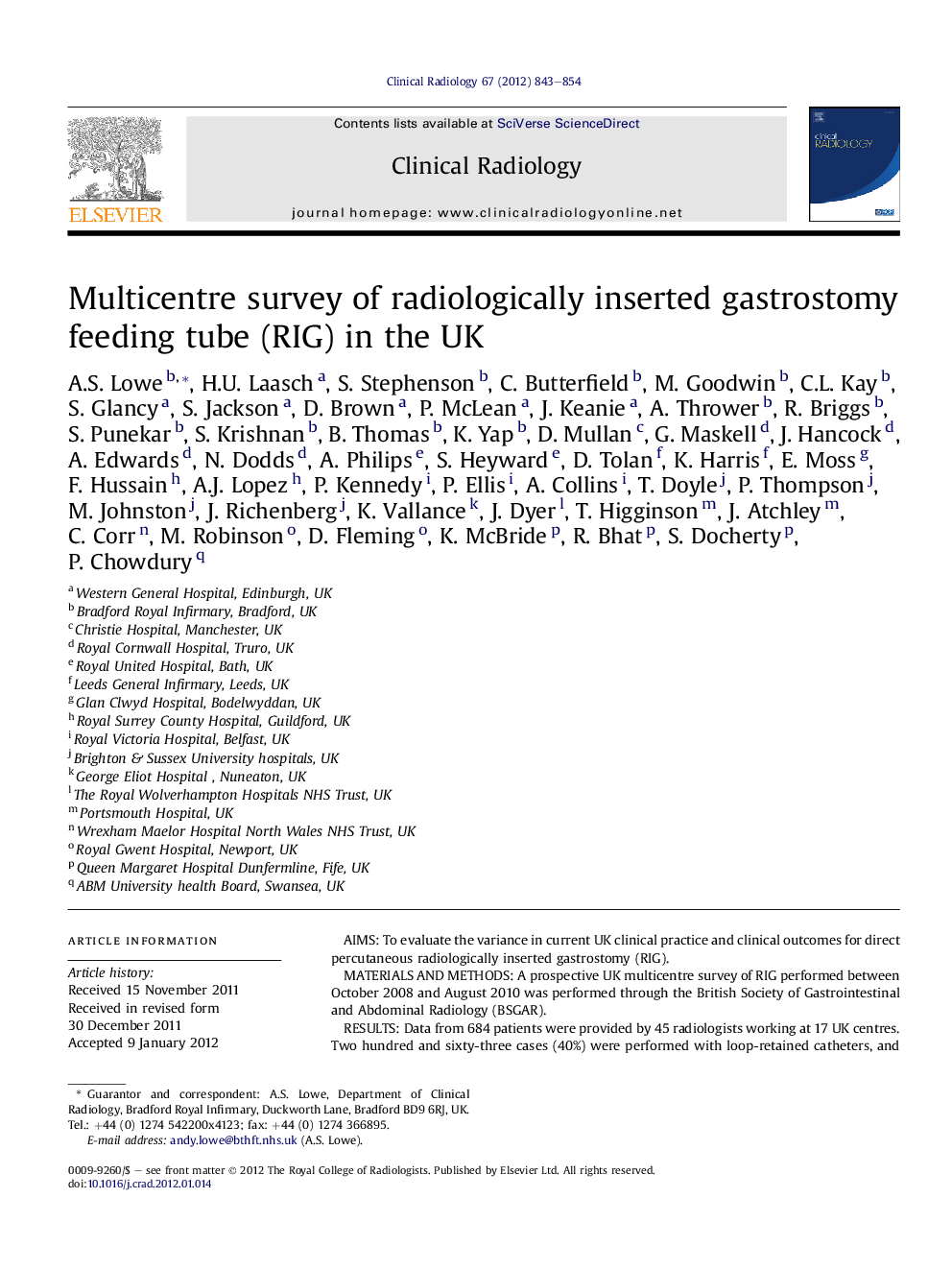| Article ID | Journal | Published Year | Pages | File Type |
|---|---|---|---|---|
| 3981992 | Clinical Radiology | 2012 | 12 Pages |
AimsTo evaluate the variance in current UK clinical practice and clinical outcomes for direct percutaneous radiologically inserted gastrostomy (RIG).Materials and methodsA prospective UK multicentre survey of RIG performed between October 2008 and August 2010 was performed through the British Society of Gastrointestinal and Abdominal Radiology (BSGAR).ResultsData from 684 patients were provided by 45 radiologists working at 17 UK centres. Two hundred and sixty-three cases (40%) were performed with loop-retained catheters, and 346 (53%) with balloon-retained devices. Sixty percent of all patients experienced pain in the first 24 h, but settled in the majority thereafter. Early complications, defined as occurring in the first 24 h, included minor bleeding (1%), wound infection (3%), peritonism (2%), and tube misplacement (1%). Late complications, defined as occurring between day 2 and day 30 post-procedure, included mild pain (30%), persisting peritonism (2%), and 30 day mortality of 1% (5/665). Pre-procedural antibiotics or anti-methicillin-resistant Staphylococcus aureus (MRSA) prophylaxis did not affect the rate of wound infection, peritonitis, post-procedural pain, or mortality. Ninety-three percent of cases were performed using gastropexy. Gastropexy decreased post-procedural pain (p < 0.001), but gastropexy-related complications occurred in 5% of patients. However, post-procedure pain increased with the number of gastropexy sutures used (p < 0.001). The use of gastropexy did not affect the overall complication rate or mortality. Post-procedure pain increased significantly as tube size increased (p < 0.001). The use of balloon-retention feeding tubes was associated with more pain than the deployment of loop-retention devices (p < 0.001).ConclusionRIG is a relatively safe procedure with a mortality of 1%, with or without gastropexy. Pain is the commonest complication. The use of gastropexy, fixation dressing or skin sutures, smaller tube sizes, and loop-retention catheters significantly reduced the incidence of pain. There was a gastropexy-related complication rate in 5% of patients. Neither pre-procedural antibiotics nor anti-MRSA prophylaxis affected the rate of wound infection.
